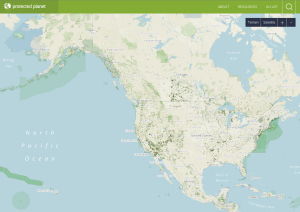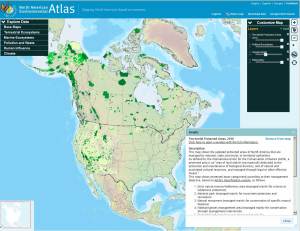PAD-US is the United States submission to the World Database on Protected Areas (WDPA), a project of the International Union for the Conservation of Nature (IUCN) and the UN Environmental Program (UNEP). This database contains the most important biological areas globally and it is the tracking framework for the Convention on Biological Diversity (CBD), to which the U.S. is a signatory.
GLOBAL BIODIVERSITY
The CBD, signed by 192 countries in 2010, sets the so-called Aichi Targets, a set 20 biodiversity goals, to be achieved by 2020. One of these, Target 11, addresses the amount of land that should be conserved for primarily biodiversity purposes:
By 2020, at least 17 per cent of terrestrial and inland water areas and 10 per cent of coastal and marine areas, especially areas of particular importance for biodiversity and ecosystem services, are conserved through effectively and equitably managed, ecologically representative and well-connected systems of protected areas and other effective area-based conservation measures, and integrated into the wider landscape and seascape. This target sets out a series of equally important and necessary elements that a global protected area network should deliver.
PAD-US is defines these lands and ocean areas in relation to this target for the U.S., focusing on the gap status 1 and 2 lands – those where the dominant focus is management for the conservation of habitat and species. The gap status system is defined by the USGS Gap Analysis Program (GAP), which is also the manager of PAD-US. This data is shows on the Protected Planet web site, which showcases the WDPA and is managed by the World Conservation Monitoring Center.
In addition to the gap status ranks, the PAD-US team also applies IUCN management categories, for us in the global data system (within the U.S., gap status ranks are used).
THE NORTH AMERICAN ENVIRONMENTAL ATLAS
The Commission on Environmental Cooperation (CEC) is a joint powers body of Canada, the U.S. and Mexico which was set up as part of the NAFTA trade agreement to address environmental concerns. Its key focus is to encourage ecosystem protection in all three countries and to provide overall data and assessment across their respective data systems.
PAD-US is the U.S. contribution to CEC’s North American Environmental Atlas, with a particular focus on USGS gap status 1-3 lands (adding the multiple use areas to the lands conserved primarily for natural functions).

